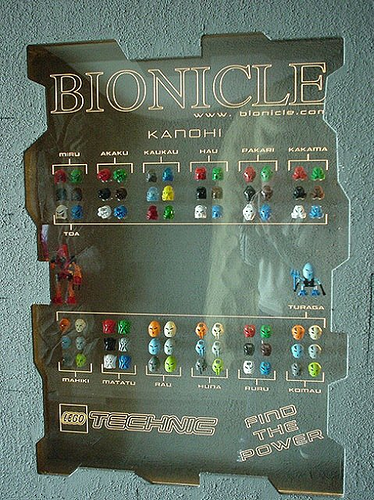@KDNX congratulations on this amazing analysis! It nicely compliments what I have been doing in Rare Kanohi research topic. It is nice seeing multiple people reach same conclusions independently ![]()
You and @Wolk created this insightful chronology of the thought and production process and it gives context to the patterns of the mask frequencies we see in the wild.
If we go back to this picture:
The reason why the Matatu and Ruru are not fully in the updated Turaga colors is clear now - it is because of the late secondary color decision.
Also, and this only occured to me now - the Hau, Pakari and Kakama seem to be Medium Blue in this display. Ithought it was just the lighting, but on the second thought, I think we are looking at those “12 color stage” masks.
Your analysis also answers another question: “Why do we not see the great masks in the remaining two Turaga colors?” The answer is because as you said, the 12 color stage was halted before the ice and earth secondary colors were finalized.
But here is another thought: How do prototype masks play into this? All of the parts discussed here are final molds, but there are many examples of masks in colors whose color was among the last to be decided, in quick prototype form. Dark gray Ruru for example. If they already had many Ruru test runs in different colors, why not just try the final secondary colors on final retail molds instead of going back to 3d print prototyping?
Not to mention that the prototype Toa sets had prototype mold masks, but in the final colors and shape allocations. What I mean by this is that despite what the order of masks in Toa colors here might indicate, I don’t think the mask shapes were ever going to be swapped around between Toa. And there is also concept art supporting this (though chronology alignment of these two might be tricky).
